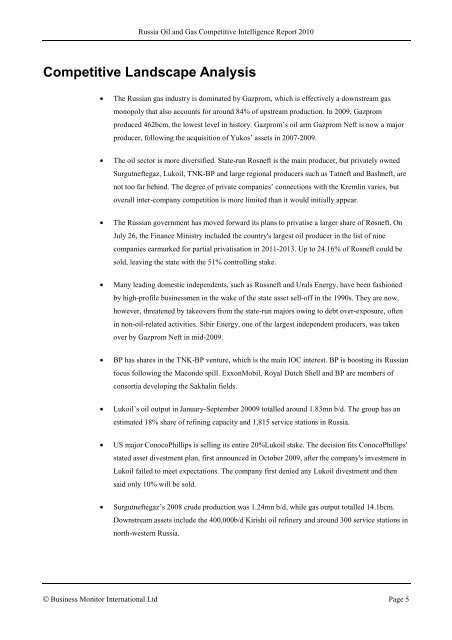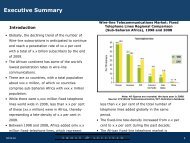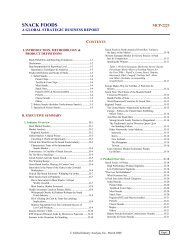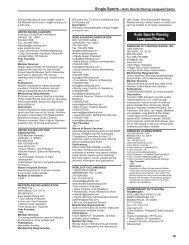the RUSSIA oil & gas competitive intelligence report - Report Buyer
the RUSSIA oil & gas competitive intelligence report - Report Buyer
the RUSSIA oil & gas competitive intelligence report - Report Buyer
You also want an ePaper? Increase the reach of your titles
YUMPU automatically turns print PDFs into web optimized ePapers that Google loves.
Russia Oil and Gas Competitive Intelligence <strong>Report</strong> 2010<br />
Competitive Landscape Analysis<br />
• The Russian <strong>gas</strong> industry is dominated by Gazprom, which is effectively a downstream <strong>gas</strong><br />
monopoly that also accounts for around 84% of upstream production. In 2009, Gazprom<br />
produced 462bcm, <strong>the</strong> lowest level in history. Gazprom’s <strong>oil</strong> arm Gazprom Neft is now a major<br />
producer, following <strong>the</strong> acquisition of Yukos’ assets in 2007-2009.<br />
• The <strong>oil</strong> sector is more diversified. State-run Rosneft is <strong>the</strong> main producer, but privately owned<br />
Surgutneftegaz, Luk<strong>oil</strong>, TNK-BP and large regional producers such as Tatneft and Bashneft, are<br />
not too far behind. The degree of private companies’ connections with <strong>the</strong> Kremlin varies, but<br />
overall inter-company competition is more limited than it would initially appear.<br />
• The Russian government has moved forward its plans to privatise a larger share of Rosneft. On<br />
July 26, <strong>the</strong> Finance Ministry included <strong>the</strong> country's largest <strong>oil</strong> producer in <strong>the</strong> list of nine<br />
companies earmarked for partial privatisation in 2011-2013. Up to 24.16% of Rosneft could be<br />
sold, leaving <strong>the</strong> state with <strong>the</strong> 51% controlling stake.<br />
• Many leading domestic independents, such as Russneft and Urals Energy, have been fashioned<br />
by high-profile businessmen in <strong>the</strong> wake of <strong>the</strong> state asset sell-off in <strong>the</strong> 1990s. They are now,<br />
however, threatened by takeovers from <strong>the</strong> state-run majors owing to debt over-exposure, often<br />
in non-<strong>oil</strong>-related activities. Sibir Energy, one of <strong>the</strong> largest independent producers, was taken<br />
over by Gazprom Neft in mid-2009.<br />
• BP has shares in <strong>the</strong> TNK-BP venture, which is <strong>the</strong> main IOC interest. BP is boosting its Russian<br />
focus following <strong>the</strong> Macondo spill. ExxonMobil, Royal Dutch Shell and BP are members of<br />
consortia developing <strong>the</strong> Sakhalin fields.<br />
• Luk<strong>oil</strong>’s <strong>oil</strong> output in January-September 20009 totalled around 1.83mn b/d. The group has an<br />
estimated 18% share of refining capacity and 1,815 service stations in Russia.<br />
• US major ConocoPhillips is selling its entire 20%Luk<strong>oil</strong> stake. The decision fits ConocoPhillips'<br />
stated asset divestment plan, first announced in October 2009, after <strong>the</strong> company's investment in<br />
Luk<strong>oil</strong> failed to meet expectations. The company first denied any Luk<strong>oil</strong> divestment and <strong>the</strong>n<br />
said only 10% will be sold.<br />
• Surgutneftegaz’s 2008 crude production was 1.24mn b/d, while <strong>gas</strong> output totalled 14.1bcm.<br />
Downstream assets include <strong>the</strong> 400,000b/d Kirishi <strong>oil</strong> refinery and around 300 service stations in<br />
north-western Russia.<br />
© Business Monitor International Ltd Page 5









